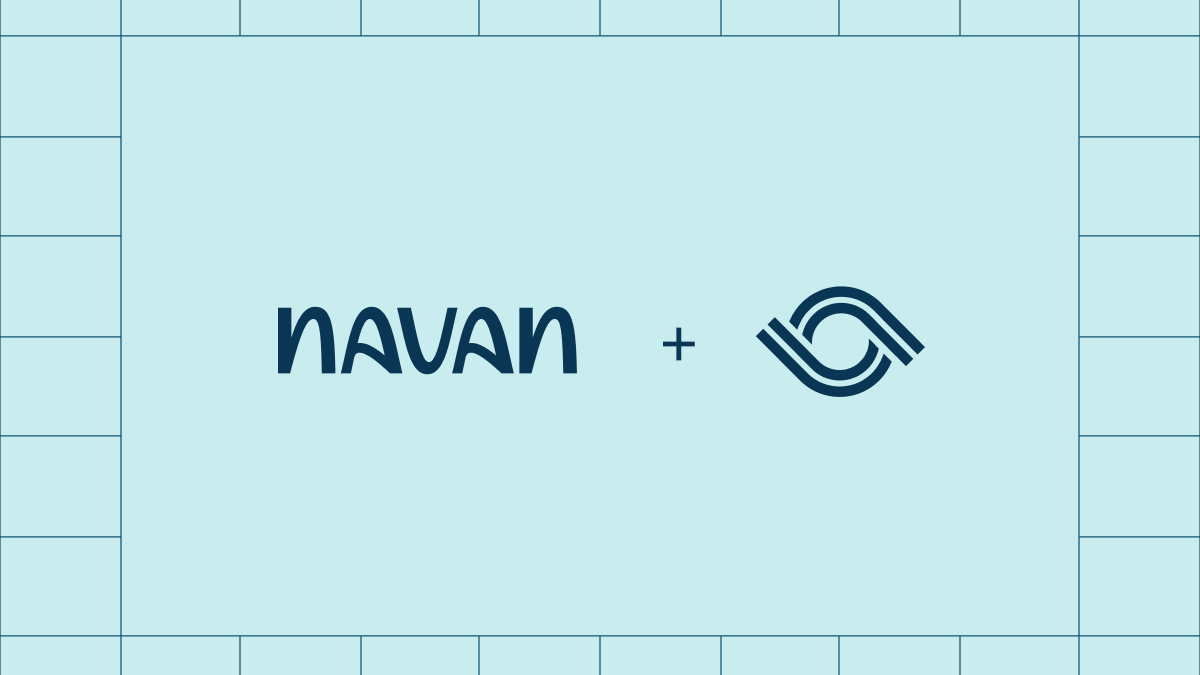
June 22, 2024 • 24 min read
The Step-By-Step Guide to Crafting a Compliance Report

Sean Kenney
Crafting accurate and comprehensive compliance reports must be balanced in regulatory compliance and risk management. A compliance report is vital for organizations to demonstrate their adherence to regulatory requirements, showcase their commitment to data protection, and assure stakeholders. In this guide, we will delve into the intricacies of crafting effective compliance reports, outlining the key components, steps, and strategies for success in compliance reporting.
What is a Compliance Report, and Why Do You Need One?
Compliance reports are pivotal in demonstrating a commitment to data protection laws, cybersecurity best practices, and specific industry rules and regulations. For compliance managers and chief compliance officers, these reports are indispensable tools for evaluating the effectiveness of compliance initiatives, identifying areas of compliance risk, and charting a course for corrective action. They also play a crucial role in transparent communication with stakeholders, reinforcing trust and accountability. In an era where data breaches and compliance failures can have significant reputational and financial repercussions, the ability to produce accurate and detailed compliance reports is more crucial than ever.
By clearly understanding the compliance mechanisms, these reports empower organizations to address regulatory scrutiny and effectively mitigate their compliance risk. The strategic value of compliance reports extends beyond mere regulatory adherence; they underscore an organization’s dedication to operational excellence and integrity, paving the way for sustained growth and stability in a rapidly changing regulatory environment.
What are the Different Types of Compliance Reports?
Understanding the nuances between various compliance reports is essential for tailoring an organization’s approach to meet specific regulatory and operational needs in the complex corporate compliance landscape.
- Regulatory compliance reports focus on adherence to applicable laws and industry regulations, such as GDPR for data privacy, HIPAA for healthcare information security, and Payment Card Industry Data Security Standards (PCI DSS) for payment card industry standards. These reports are critical for ensuring organizational practices align with legal obligations, protecting the organization from potential penalties and breaches.
- Operational compliance reports evaluate the efficiency and effectiveness of internal processes in meeting corporate compliance standards, often guided by frameworks like ISO. These reports are indispensable for internal stakeholders aiming to optimize business operations while adhering to established protocols.
- Financial compliance reports delve into the integrity of financial reporting and transactions, ensuring transparency and accountability following financial regulations and standards. They are crucial for maintaining investor confidence and ensuring the organization’s economic health. Technical and network security reports assess the robustness of an organization’s IT infrastructure against cybersecurity threats, focusing on data security and protecting sensitive information.
These reports are vital to mitigating risks associated with data breaches and cyber-attacks. Lastly, data privacy reports scrutinize the handling and protection of personal data, ensuring compliance with data privacy laws and regulations. They reassure clients and customers about safeguarding their personal information, fostering trust and compliance with data protection standards.
Critical Components of a Comprehensive Compliance Report
At the heart of a comprehensive compliance report is a careful assembly of elements critical to conveying an organization’s adherence to regulatory frameworks and internal governance. These components collectively provide a clear, actionable snapshot of compliance status, areas of risk, and forward-moving strategies. The report provides a comprehensive overview of the organization’s compliance program, highlighting the essential policies, procedures, and controls implemented to manage compliance risk effectively.
A robust analysis of potential and actual compliance risks anchors the report, categorizing them according to severity and impact, thus guiding priority in remediation efforts. The outcomes of compliance audits are integral to the report. These sections document the methodologies employed, the findings uncovered, and any deviations from expected standards or regulatory requirements.
Following the audit findings, the report outlines targeted action plans for improvement. These plans are comprehensive, listing specific steps for rectification, responsible parties, and timelines for completion, ensuring accountability and progress monitoring. Additionally, the report emphasizes suggestions for continued monitoring and improvement of compliance.
This future-focused perspective underscores the organization’s commitment to continual improvement and adaptation to evolving regulatory landscapes. The report contains essential data points, performance metrics, and trend analyses that provide valuable insights into the organization’s compliance trajectory.
By integrating these key components, a compliance report transcends its role from a mere regulatory obligation to a strategic tool, empowering organizations to navigate the complexities of regulatory compliance with confidence and clarity.

How Do You Write a Compliance Report?
Creating a compliance report requires careful planning and thorough preparation, which is foundational to developing a document that accurately reflects an organization’s adherence to regulatory frameworks and commitment to operational integrity. This stage is pivotal in setting the groundwork for a comprehensive analysis of the compliance landscape, enabling compliance managers and chief compliance officers to approach the reporting process with precision and depth.
Understand the Requirements
To do this efficiently, you must familiarize yourself with the reporting standards, norms, and criteria set forth by the regulatory bodies relevant to your industry. Understanding the context and requirements directs your data collection and shapes the framework of your compliance report.
Data Collection
The next step involves a thorough data collection effort, which requires gathering all pertinent documentation, records, and evidence related to the organization’s compliance activities. This includes but is not limited to, policies and procedures documentation, previous audit reports, training records, incident response logs, and any correspondence with regulatory bodies. The objective is to amass a repository of information that provides a holistic view of the compliance status, ensuring nothing is overlooked.
Parallel to data collection, identifying and engaging key stakeholders is critical. These stakeholders span various organizational departments and levels, including individuals who directly oversee or contribute to the compliance program. Engaging these stakeholders early in the process ensures their insights and perspectives are incorporated, enriching the depth of the compliance report. Case studies reveal that leveraging a connected risk platform to centralize documentation can save valuable time and streamline stakeholder communication.
Conducting a Thorough Compliance Audit
The cornerstone of a compliance report is a comprehensive compliance audit, a process that demands rigor, detail, and strategic planning. This step requires a meticulous evaluation of an organization’s systems, procedures, and controls to ascertain their alignment with the relevant regulatory mandates and security norms. During this phase, the compliance team, led by seasoned compliance managers and officers, delves deep into the organization’s operational facets to unearth non-compliance issues, vulnerabilities, and areas that present a risk of deviation from the established standards.
A thorough security and compliance audit goes beyond surface-level examination; it involves a granular analysis of data handling practices, internal controls, and the compliance program’s effectiveness in its current state. This assessment is done through various methodologies, including interviews, document reviews, and on-site observations, to paint a comprehensive picture of the compliance landscape. The audit also assesses the robustness of the organization’s response mechanisms to compliance violations, testing the resilience and agility of existing frameworks in real-time scenarios.
The audit results serve as the foundation of the compliance report, furnishing a factual foundation for identifying deficiencies, classifying risks based on their severity, and prioritizing corrective actions. In conducting a thorough compliance audit, organizations equip themselves with the necessary insights to fortify their compliance stance, ensuring a reactive stance to compliance and a proactive and strategic approach to managing regulatory obligations and risks.
Analyzing Findings and Identifying Non-Compliance Issues
Upon completing the compliance audit, the focus shifts to critically analyzing the gathered findings, pivotal in unveiling any non-compliance and the underlying reasons contributing to such discrepancies. This phase demands a nuanced approach, where compliance risks are meticulously categorized and scrutinized to pinpoint existing compliance gaps and rank them based on their potential impact on the organization. This risk prioritization is indispensable as it informs the strategic direction and urgency of the remediation efforts.
Engagement with relevant stakeholders during this stage is paramount. It ensures a comprehensive understanding of the audit findings and fosters a collaborative atmosphere for addressing the identified compliance gaps. Such collaboration is critical for devising effective action plans tailored to address the root causes of non-compliance issues, thereby enhancing the organization’s overall compliance stature.
Furthermore, this analytical process is foundational to developing targeted action plans. It facilitates a deep dive into the intricacies of each identified issue, enabling compliance managers and chief compliance officers to formulate precise corrective measures aligned with the organization’s risk management objectives and regulatory obligations. Through this rigorous analysis, organizations are better positioned to transform compliance challenges into opportunities to strengthen compliance frameworks.
Developing Action Plans for Compliance Improvement
Crafting actionable plans for compliance improvement is a pivotal phase in the compliance reporting process, necessitating a strategic and nuanced approach. This step emerges directly from the thorough analysis of audit findings and identified non-compliance issues, serving as a blueprint for fortifying an organization’s compliance framework. Action plans must be detailed, outlining specific remedial actions, designating responsible parties, and establishing clear timelines for execution. This ensures accountability and facilitates the tracking of progress towards compliance enhancement.
- Short-Term Fixes and Long-Term Strategies
A crucial aspect of developing these plans is incorporating both short-term fixes and long-term strategies to address systemic compliance risks. This may involve updating or creating comprehensive policies and procedures, enhancing internal controls, and implementing robust training programs for staff to instill a culture of compliance across all levels of the organization.
- Leveraging Advanced Technology
Additionally, leveraging advanced technology solutions plays a significant role in these action plans. Automation tools and compliance management software can streamline compliance processes and reduce human error while alerting systems ensure real-time monitoring and swift response to potential compliance breaches.
- Aligning Action Plans to Organizational Frameworks and Regulations
Equally important is aligning action plans with the organization’s overall risk management framework and regulatory obligations. This alignment ensures that efforts to improve compliance are targeted and efficient and contribute to the organization’s strategic objectives.
Engaging stakeholders throughout the development and implementation of these plans is critical to fostering a collaborative and transparent approach to compliance improvement, ultimately enhancing the organization’s ability to navigate the complexities of regulatory compliance with agility and confidence.
Compiling and Structuring the Report
Efficiently completing the compliance reporting process requires careful planning and meticulous report organization. During this crucial stage, it is essential to prioritize clarity, coherence, and precision to surpass the expectations and requirements of stakeholders and regulatory bodies. The goal is to combine all the data, audit results, analyses, and action plans to create a comprehensive story that accurately represents the organization’s compliance status and future direction.
The report should be organized logically, with sections carefully arranged to guide the reader through thoroughly exploring the compliance program overview, detailed findings, and recommendations. Every report segment should smoothly transition to the next, creating a seamless flow of information that improves understanding. Creating or utilizing an existing compliance report template can assist in the organizational process and reduce resource utilization.
Attention to detail is paramount; every piece of data and assertion made within the report should be cross-verified for accuracy and relevance, ensuring the final document stands as a testament to the organization’s dedication to compliance excellence. Visual aids such as charts, graphs, and tables should be employed judiciously to break down complex information and illustrate trends. This makes the report a document of record and a tool for strategic decision-making.
By adhering to these principles, the organization positions itself to effectively communicate its compliance efforts, challenges surmounted, and the path forward, establishing a foundation for ongoing compliance success and stakeholder confidence and peace of mind.
Review, Revise, and Finalize
Finalizing a compliance report requires a thorough and detailed review process to ensure that every aspect of the document meets the highest standards of accuracy and professionalism. This stage is not merely about refining the text for clarity and coherence but also about validating the integrity of the data presented and its unity with regulatory requirements and internal objectives. It thoroughly examines the entire report, from the initial assessments and audits to the proposed action plans, scrutinizing each for precision, relevance, and impact.
Engaging a diverse group of stakeholders during this phase is critical. Input from various departments can expose overlooked aspects or inaccuracies, providing a well-rounded perspective on compliance efforts and outcomes. This collaborative review enhances the report’s content and reinforces the organization’s commitment to transparency and collective responsibility in compliance matters.
When handling revisions, it is essential to exercise caution and ensure that any changes demonstrate a strategic grasp of compliance obligations and risk management. Every change, whether modifying the action plans or fine-tuning the compliance risk analysis, must be thoroughly evaluated to maintain the report’s credibility and the organization’s compliance standing. Risk management software can centralize risk management, increase visibility, and save time.
This structured approach produces a compliance report that meets organizational and regulatory requirements and gives an accurate overview of the organization’s compliance trajectory. After careful review and editing, the report is ready to drive the business toward compliance and operational excellence.
Navigating Challenges in Compliance Reporting
Navigating the diverse landscape of compliance reporting presents unique challenges that demand strategic foresight and innovative problem-solving.
Among these hurdles are the intricacies of data collection, the dynamic nature of regulatory requirements, the constraints of organizational resources, and, sometimes, a need for comprehensive stakeholder engagement. To address these issues, organizations are increasingly turning to technology solutions that offer real-time reporting capabilities and automate complex compliance processes. These tools streamline the collection and analysis of vast data and ensure accuracy and timeliness in meeting reporting requirements.
Additionally, the agility to adapt to regulatory changes is crucial in maintaining a robust compliance posture. Organizations must foster a proactive culture that anticipates and responds to the evolving regulatory environment, integrating new standards and practices into their compliance frameworks with minimal disruption. Engaging stakeholders at every level of the organization is equally essential; by cultivating a shared understanding of compliance objectives and the strategic value of thorough reporting, organizations can galvanize support and foster a collective commitment to excellence in compliance.
By addressing these challenges with strategic planning, technological innovation, and stakeholder collaboration, organizations can navigate the complexities of compliance reporting, reinforcing their dedication to operational integrity and regulatory adherence.
Ensuring Success in Compliance Reporting
Successfully navigating the process of generating compliance reports requires a thoughtful and strategic approach, prioritizing operational integrity and a deep understanding of the business landscape. This guide has laid out the fundamental steps and considerations necessary for creating reports that fulfill regulatory mandates and serve as strategic tools for organizational improvement.
Success in this domain hinges on a thorough understanding of regulatory landscapes, meticulous preparation, and the adept analysis of compliance data. Equally important is adopting technological advancements that streamline reporting processes, ensuring accuracy and efficiency. By fostering a proactive compliance culture, organizations can stay ahead of regulatory changes, effectively mitigate risks, and maintain transparency and accountability. As the regulatory environment continues to evolve, the ability to produce comprehensive and actionable compliance reports will remain a pivotal factor in sustaining an organization’s reputation and operational excellence. The right compliance management software can help ease compliance challenges, secure your organization, and accelerate your business.
Embracing the challenges and strategies positions organizations to achieve and surpass compliance reporting goals, reinforcing their commitment to upholding the highest regulatory compliance and risk management standards.
Frequently Asked Questions
- How do you write a compliance report? Creating a compliance report requires careful planning and thorough preparation, which is foundational to developing a document that accurately reflects an organization’s adherence to regulatory frameworks and commitment to operational integrity.
- What are the challenges of compliance reporting? Among these hurdles are the intricacies of data collection, the dynamic nature of regulatory requirements, the constraints of organizational resources, and, sometimes, a lack of comprehensive stakeholder engagement.
- Why do you need to have a compliance report? Compliance reports are pivotal in demonstrating a commitment to data protection laws, cybersecurity best practices, and specific industry rules and regulations.
About the authors

Sean Kenney is a Manager of Product Solutions at AuditBoard, specializing in IT Risk and Compliance. Prior to joining AuditBoard, Sean worked for an Information Security Consulting company where he did GRC advisory services for clients.
You may also like to read


What to look for in modern IT risk management software

Beyond the compliance checklist: Risk-driven cyber GRC

How Navan built a connected risk strategy with AuditBoard AI

What to look for in modern IT risk management software

Beyond the compliance checklist: Risk-driven cyber GRC
Discover why industry leaders choose AuditBoard
SCHEDULE A DEMO



